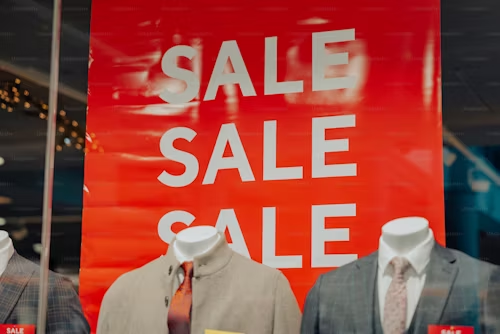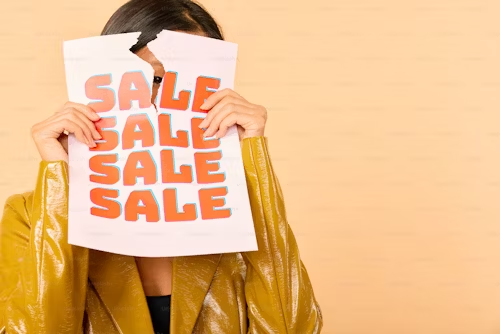“Buy 1 Get 1 Free” (BOGO) deals are a popular marketing tactic used by retailers to attract customers and boost sales. While these offers can seem like a great deal, they can sometimes lead to unnecessary purchases and overspending. This blog post will explore how to navigate these promotions wisely and avoid falling into the trap of BOGO deals, ensuring you make smart shopping decisions.
Table of Contents
1. Understanding BOGO Deals
Before diving into how to handle BOGO offers, it’s important to understand what they are:
a. Definition
A “Buy 1 Get 1 Free” offer means that when you purchase one item at the regular price, you receive a second item of equal or lesser value for free.
Example: You buy a pair of shoes for $100, and you get another pair for free.
b. Variations
BOGO deals can come in different forms:
- BOGO Free: Buy one item, get another of equal or lesser value for free.
- BOGO 50% Off: Buy one item, get the second item at 50% off.
- BOGO Mix and Match: Buy one item from a certain category, and get another item from a different category for free or at a discount.
2. The Psychology Behind BOGO Deals
Retailers use BOGO deals to entice customers with the perceived value of getting something for free. This can play on psychological triggers:
a. Perceived Value
The idea of getting something for free can create a sense of increased value, making you more likely to purchase.
Example: A customer might buy an item they don’t need just to get a second item for free.
b. Urgency
BOGO deals often come with a limited-time offer, creating urgency and encouraging immediate purchases.
Example: A store might advertise a BOGO deal for a weekend only, pushing you to buy quickly.
3. Identifying the True Value of BOGO Deals
To avoid falling for BOGO traps, assess the true value of the offer:
a. Compare Prices
Check the regular price of the items included in the BOGO deal. Compare this with the price of buying each item separately.
Example: If the regular price of each item is $50, and the BOGO deal applies to items priced at $25, ensure that the deal is genuinely saving you money.
b. Assess Necessity
Determine if you actually need the items offered in the BOGO deal. If the free item is something you wouldn’t have purchased otherwise, it’s not a real saving.
Example: If you’re only interested in one product but are getting a second product for free that you don’t need, it may not be worth the purchase.
c. Check for Hidden Costs
Some BOGO deals might have hidden costs such as shipping fees, higher prices for the first item, or restrictions on the free item.
Example: If the free item is limited to certain models or sizes, it might not be as valuable as it seems.
4. Strategies to Avoid the BOGO Trap
Here are some practical tips to help you avoid falling for BOGO traps:
a. Stick to Your List
Before shopping, make a list of what you truly need and stick to it. Avoid making impulse purchases just because of a BOGO offer.
Example: If you need only one shirt, don’t buy two just because of a BOGO offer.
b. Calculate the Total Cost
Calculate the total cost of the BOGO deal compared to purchasing the items separately. Ensure that the deal offers genuine savings.
Example: If the total cost of two items in a BOGO deal is $80, but buying each separately costs $70, the deal isn’t saving you money.
c. Avoid Emotional Decisions
Don’t let the excitement of getting something for free cloud your judgment. Make rational decisions based on your actual needs and budget.
Example: Avoid buying additional items just because they’re part of a BOGO offer if they don’t fit your needs.
d. Look for Better Deals
Sometimes, there may be other promotions or sales that offer better value than BOGO deals. Compare different offers to find the best deal.
Example: A store might offer a 30% discount on all items, which could be more beneficial than a BOGO deal if you’re buying multiple items.
5. Making the Most of BOGO Deals
If you do decide to take advantage of a BOGO deal, ensure you’re making the most of it:
a. Buy Items You Need
Only purchase items you genuinely need and would have bought anyway. This ensures that the deal adds value to your purchase.
Example: If you need two pairs of shoes, a BOGO deal can be a great way to get both pairs for the price of one.
b. Share the Deal
If the BOGO offer involves items you don’t need but could be useful to someone else, consider sharing the deal with friends or family.
Example: Buy a BOGO deal for toiletries and give the extra items to a friend or donate them.
c. Check Return Policies
Be aware of the store’s return policy for BOGO deals. Some stores might have specific rules about returning items bought as part of a promotion.
Example: Ensure you understand whether you can return one item from a BOGO deal if needed.
6. Conclusion
BOGO deals can be enticing, but they are designed to drive sales and can sometimes lead to unnecessary spending. By understanding the true value of these offers, sticking to your needs, and comparing prices, you can avoid falling into the trap of buying items you don’t need. Make informed decisions, use these deals wisely, and always consider if the promotion genuinely benefits you. Happy shopping!
Disclaimer: The information provided in this blog post is for general informational purposes only. While we strive to offer accurate and practical insights into avoiding pitfalls associated with “Buy 1 Get 1 Free” deals, specific offers and promotions may vary by store and location. We make no warranties or representations about the accuracy or completeness of the information provided. Always evaluate promotional deals carefully and make informed purchasing decisions based on your personal needs and budget.







